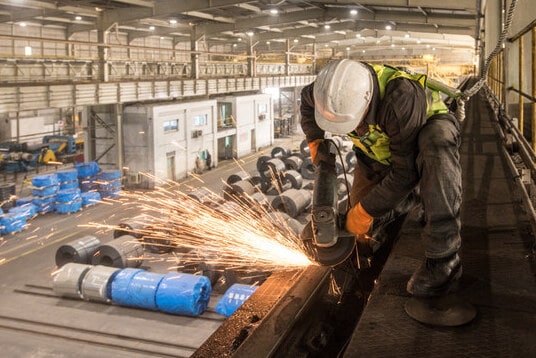In February, Saudi Arabia’s industrial production saw a 6% increase, driven by mining and manufacturing activities.
Saudi Arabia’s industrial sector has witnessed a 6% increase in its production in February, thanks to growth in the mining and manufacturing sectors. This rise is a sign of continued economic recovery from the pandemic and the country’s efforts to diversify its economy away from its dependence on oil.
The data, released by the General Authority for Statistics, shows that the production index of the mining and quarrying sector, which includes crude oil, increased by 2.1% in February compared to the previous month. Meanwhile, the manufacturing sector index saw an increase of 2.9%, and the electricity, gas, steam and air conditioning supply sector index rose by 1.1%.
The growth in the mining and manufacturing sectors is particularly significant, as these industries are key to Saudi Arabia’s efforts to diversify its economy and reduce its reliance on oil. The country has been working to develop other industries, such as petrochemicals, mining, and tourism, to help drive economic growth and create jobs.
In the mining sector, the increase in production was largely driven by higher output of crude oil, which rose to an average of 9.22 million barrels per day in February, up from 8.98 million barrels per day in January. The rise in oil production was in line with the recent decision by OPEC+ to gradually increase production levels in response to rising global demand.
Meanwhile, the manufacturing sector’s growth was driven by a strong performance from the non-metallic mineral products industry, which saw its production index rise by 13.2% in February compared to the same month last year. The food and beverages industry also saw a significant increase, with its production index rising by 11.1%.
The increase in industrial production in February is a positive sign for the Saudi economy, which has been impacted by the pandemic and the decline in oil prices. The country has taken a range of measures to support the economy during the pandemic, including stimulus packages and monetary policy measures.
Saudi Arabia’s Vision 2030 plan, which was launched in 2016, aims to transform the country’s economy and reduce its dependence on oil revenues. The plan includes a range of initiatives to develop other industries, such as mining and tourism, and increase foreign investment.
One of the key objectives of the plan is to increase the contribution of the non-oil sector to the country’s GDP. In 2020, the non-oil sector accounted for around 56% of the country’s GDP, up from 52% in 2015. The growth in the non-oil sector has helped to offset the impact of the decline in oil prices on the economy.
The increase in industrial production in February is a positive development for the country’s efforts to diversify its economy and reduce its reliance on oil. The mining and manufacturing sectors are key to these efforts, and the growth in these industries is a sign that the country’s economic diversification strategy is on track.
Looking ahead, the Saudi government will need to continue to support the development of other industries to achieve its Vision 2030 goals. The pandemic continues to pose significant challenges to the global economy, and the Saudi government will need to take measures to support the economy and ensure that the recovery is sustainable.
In conclusion, the 6% increase in Saudi Arabia’s industrial production in February is a positive sign for the country’s economy and its efforts to diversify away from its dependence on oil. The growth in the mining and manufacturing sectors is particularly significant and underscores the importance of these industries to the country’s economic diversification strategy. The government will need to continue to support the development of these industries and take measures to ensure that the recovery is sustainable in the face of ongoing challenges.
Read More on Saudi Arabia Economy





